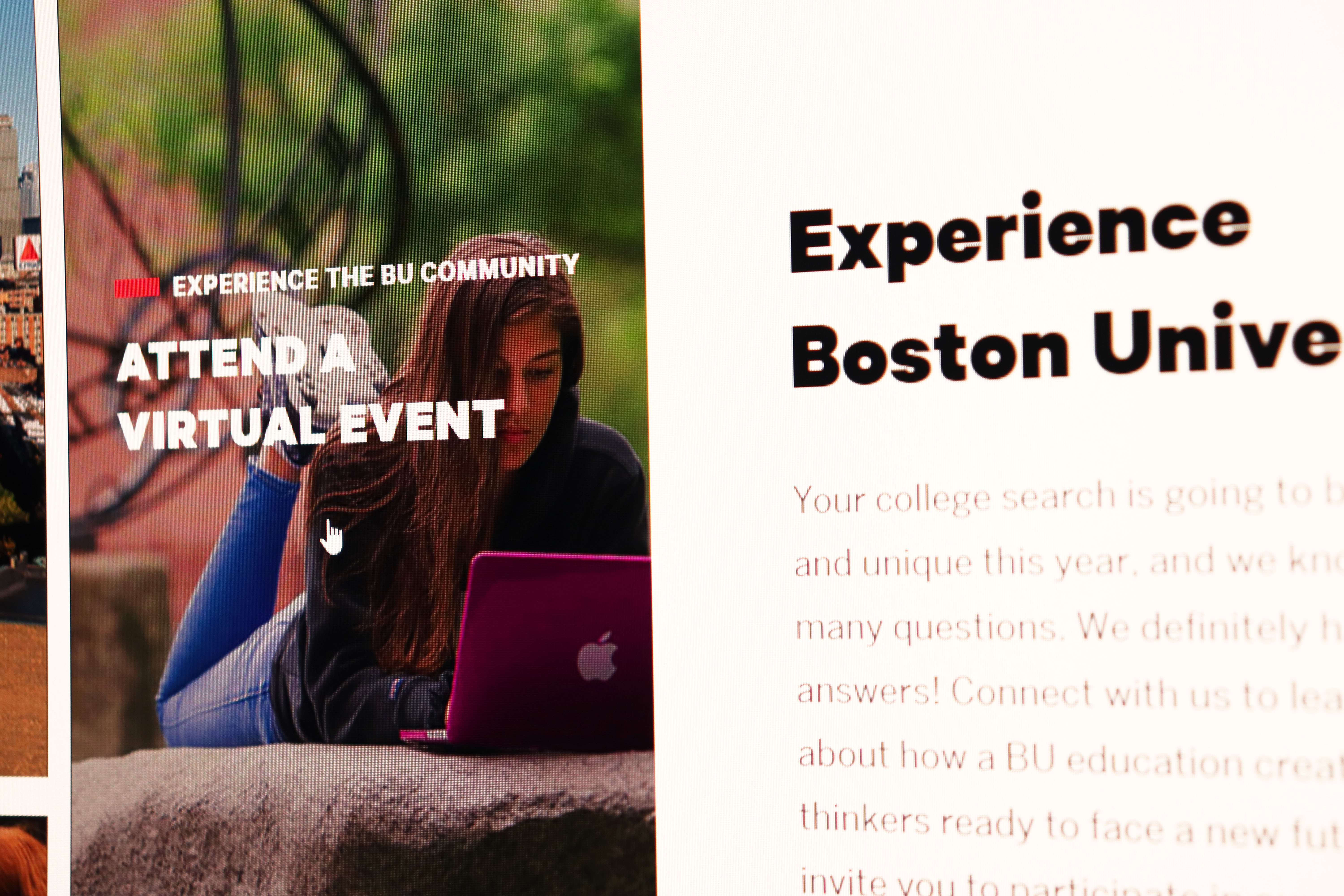Virtual college visits: A whole new process
Despite COVID-19, seniors continue to "visit" colleges
After a quick breakfast, senior Carlos Hernandez opens up his computer and navigates to Google. He opens an email with the Zoom link he has been directed to follow. Once he's logged into Zoom, he is allowed into the meeting where today's college information session will be held. Considering the pandemic's limitations right now, Hernandez is not alone; many, if not all, seniors are utilizing virtual college visits to gain insight into their next four years.
Since the quarantine mandate was first announced on March 30, colleges have been quick to adjust in order to follow these guidelines. Apart from shifting to online learning, colleges have also had to adjust their application process for incoming freshmen. Some of these adjustments include standardized test score requirements, common app sections and information sessions.
Before COVID-19 became a large-scale pandemic, colleges offered in-person college tours to convince seniors to apply to their school. Through these tours, prospective students were able to view the school's campus, community, dorm life, and facilities, among other aspects of school life. Senior Michelle Doan also attests to her preference of in-person visits. "It's different seeing the campus in-person, especially since you'll be living there. Virtually, it's just a couple of pictures," Doan says.
Despite every college's best efforts, virtual sessions fail to replace in-person tours. In-person college visits have many different advantages as visiting seniors can get a better feel for the college life. In-person visits first start with a presentation, where information, statistics, and the history of the college is relayed to prospective students. This experience is similar to what current seniors have now through virtual visits as the information conveyed is essentially the same.
However, in a physical tour, current students of the respective college guide a group of seniors through the campus. During this tour, seniors can ask about the student's own experience and how they feel about the college. Seniors also get the chance to see campus life for themselves and to examine how current college students interact as a whole. The physical college tour of exploring a campus is imitated in a virtual tour as some colleges offer a 3D view of the school, but it's not similar to the real thing.
This experience is not fully conveyed through online tours. First off, some colleges do not even bring in a current student to answer questions or talk about their experience. With the colleges that do, the time to ask questions is very limited and the tour itself is full of many seniors with many questions. However, during physical tours, incoming college freshmen can take the opportunity to interact with current college students and decide for themselves if they fit in.
Blair alumna Fran Riley acknowledged that in-person visits didn't differ information-wise, but she noted that going to a college and physically being there does make a difference in the experience itself. "It wasn't necessarily that I got more information through these visits … but by going there, I got a better feel for the school, which helped," Riley says.
Because of the differences between in-person college visits and virtual ones, some seniors have decided on another plan: visiting colleges after being accepted with the hopes that in-person visits will resume by then. "I applied to a lot of schools I was interested in and I will visit when I get accepted because that would save me the time," Doan says. Because she prefers in-person college visits because they let her get a feel for the campus, she believes this plan will help her decide on her school next year.
Despite the shortcomings of virtual visits, colleges still try their best to provide a realistic experience. Some schools, such as MIT or UMD, have admissions officers run virtual tours with the help of another person. Through this method, many questions are answered because the other speaker answers students' questions using the Q&A box option on Zoom. Additionally, some college tours invite current students from the college to speak, allowing deciding students to talk to them and answer their own questions.
Colleges also bring in multiple staff members from various departments to highlight all aspects of their college. Specifically, Johns Hopkins (JHU) has multiple staff online during a tour to add in their own insight or answer questions through the chat. They also chime in every once in a while with an interesting fact or comment in addition to the main tour guide. JHU provides pictures of their campus, alongside detailed explanations, to give students a better idea of what their university is like.
One thing that has remained constant, however, is the stress of completing college applications. Hernandez attests to this, adding that COVID-19 has only added more complications to the application process. "There is just a lot of new information coming out, all the time, a lot of changes to the rules that a lot of us have been preparing for since junior year," Hernandez says.
Even with these setbacks, seniors continue to put in all their effort to simultaneously complete college applications before their deadlines and visit colleges. We all wish them luck as they continue this process in the current pandemic.
Tags: college applications Seniors College College admissions
Tharindi Jayatilake. Hey, I'm Tharindi [she/her] :D In my free time, you can find me dancing or listening to music. More »
Comments
No comments.
Please ensure that all comments are mature and responsible; they will go through moderation.
